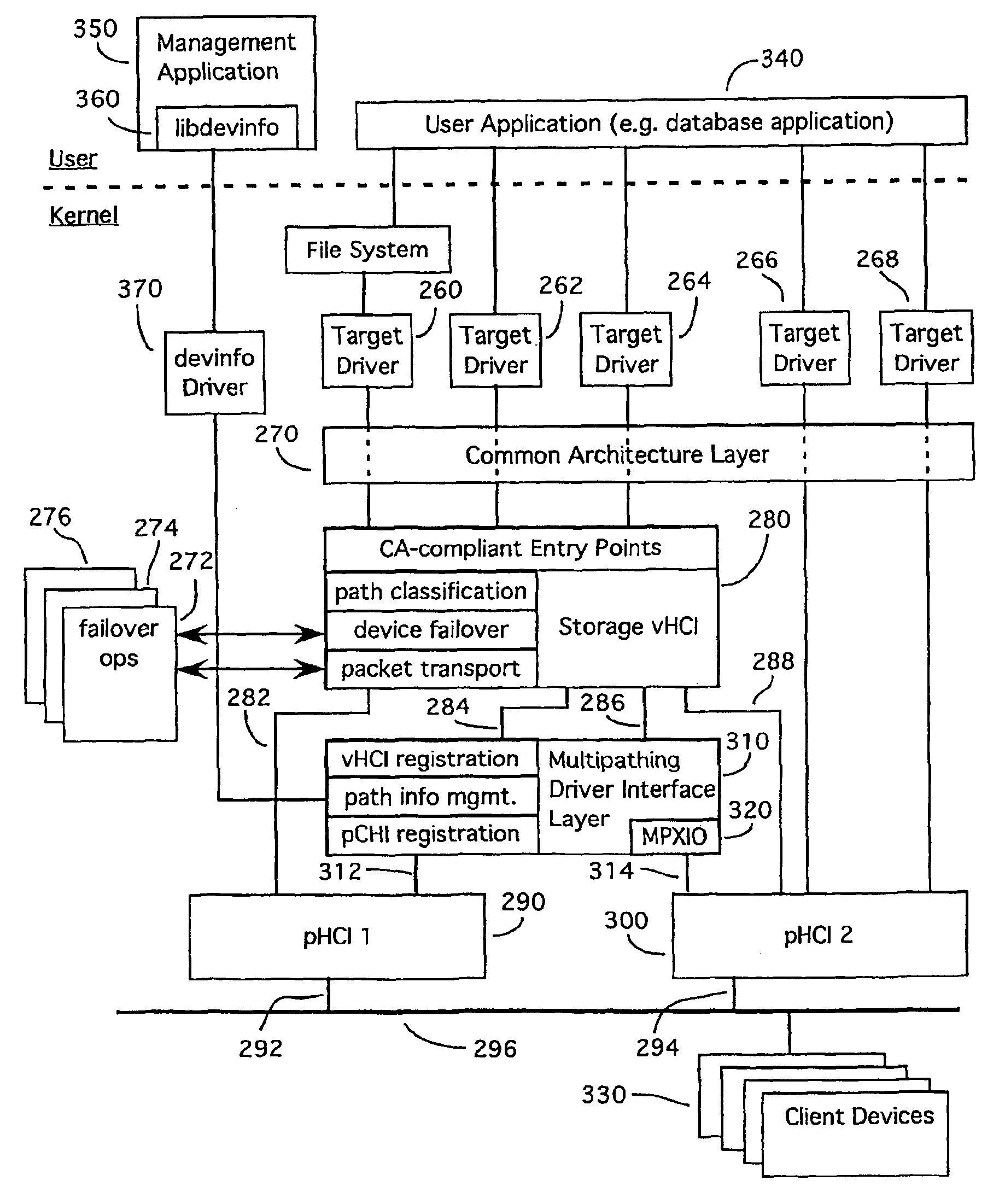Virtual host controller interface with multipath input/output
a virtual host controller and input/output technology, applied in the field of new system architecture, can solve the problems of inefficiency, time-consuming each attempt, and up to several minutes to execu
- Summary
- Abstract
- Description
- Claims
- Application Information
AI Technical Summary
Benefits of technology
Problems solved by technology
Method used
Image
Examples
Embodiment Construction
[0027]The system of the invention provides a new architecture for representing and managing devices that are accessible through multiple host controller interfaces (HCIs) from a given instance of the operating system (OS). This type of device configuration, referred to herein as “multipath”, is capable of supporting failover semantics in the event of interconnect and controller failures, as well as balancing the I / O workload across the set of available controllers. This application describes the new multiplexed I / O (MPXIO) architecture, along with a set of changes to the core of the OS which support this architecture.
[0028]A suitable OS for an embodiment of the invention is applicant's UNIX operating system, the Solaris OS. Hereinafter, reference will be made to the “Solaris OS” or just to the OS, and it should be understood that this refers to the Solaris OS or any other suitable operating system for the invention (e.g. other UNIX operating systems such as Linux, or non-UNIX operat...
PUM
 Login to View More
Login to View More Abstract
Description
Claims
Application Information
 Login to View More
Login to View More - R&D
- Intellectual Property
- Life Sciences
- Materials
- Tech Scout
- Unparalleled Data Quality
- Higher Quality Content
- 60% Fewer Hallucinations
Browse by: Latest US Patents, China's latest patents, Technical Efficacy Thesaurus, Application Domain, Technology Topic, Popular Technical Reports.
© 2025 PatSnap. All rights reserved.Legal|Privacy policy|Modern Slavery Act Transparency Statement|Sitemap|About US| Contact US: help@patsnap.com



